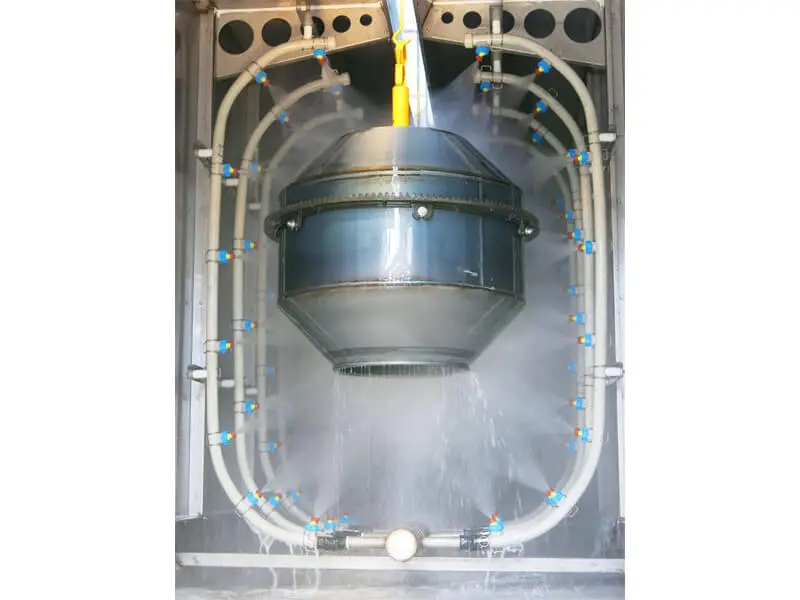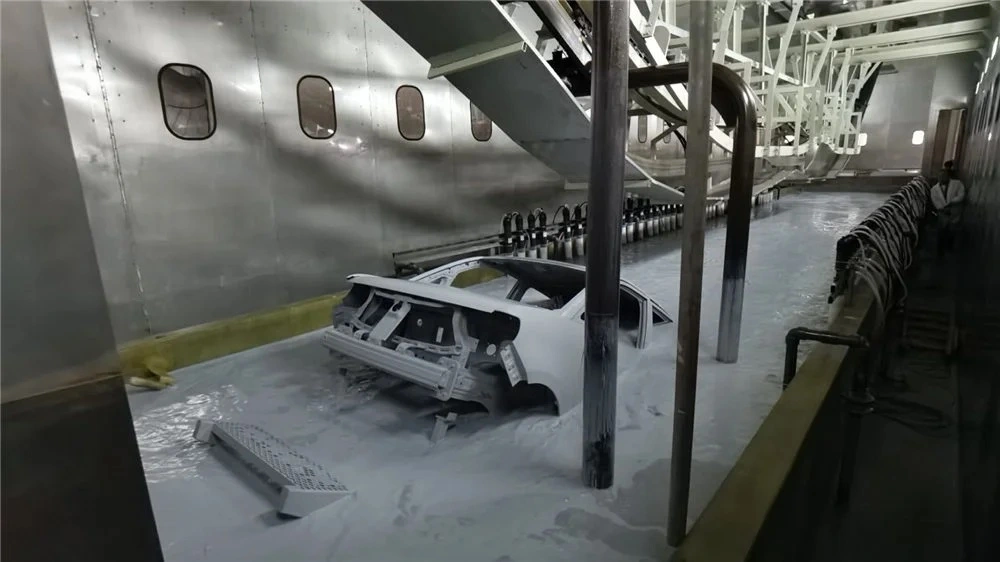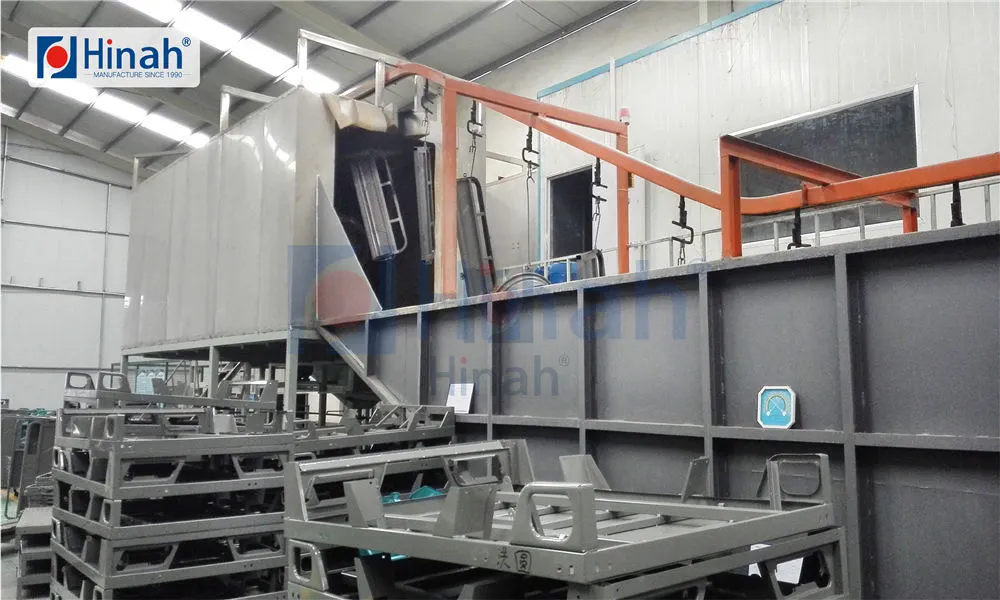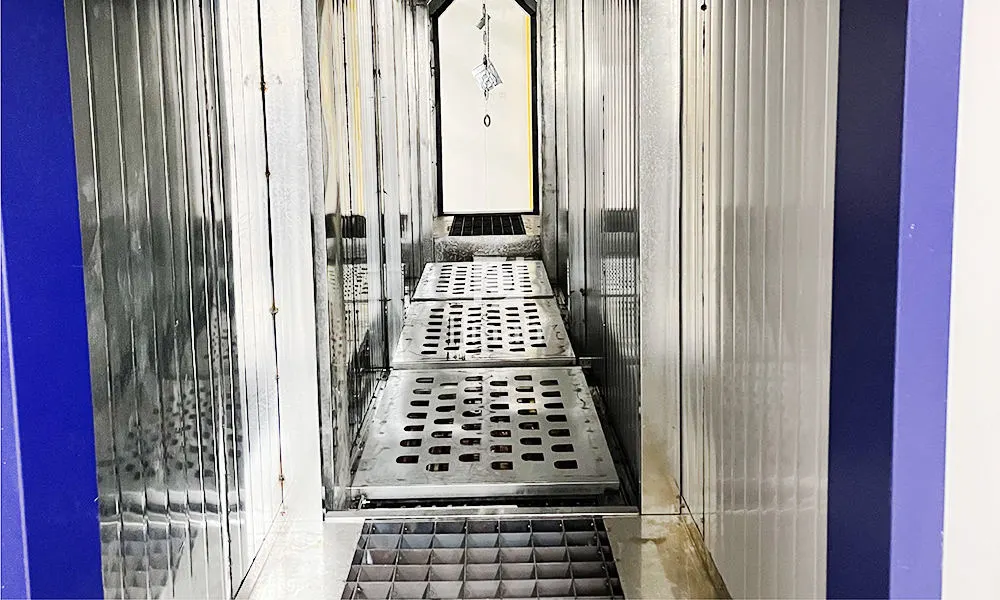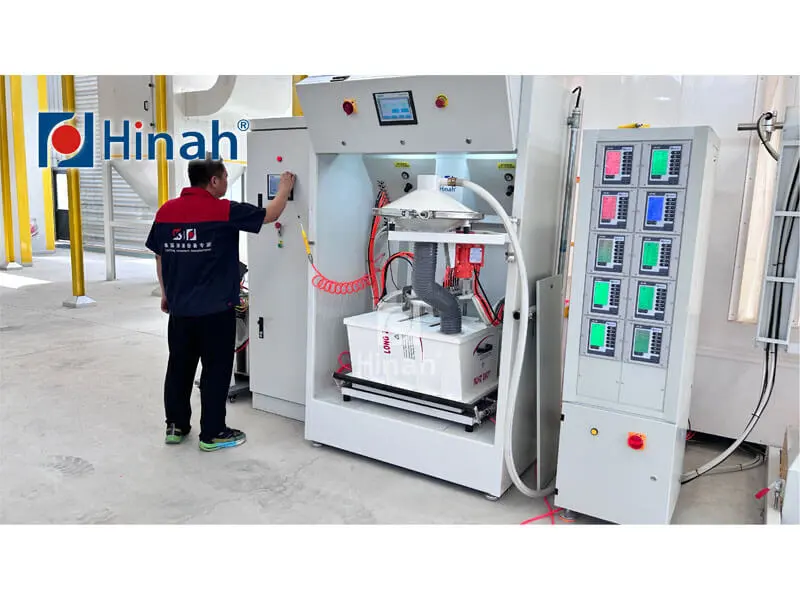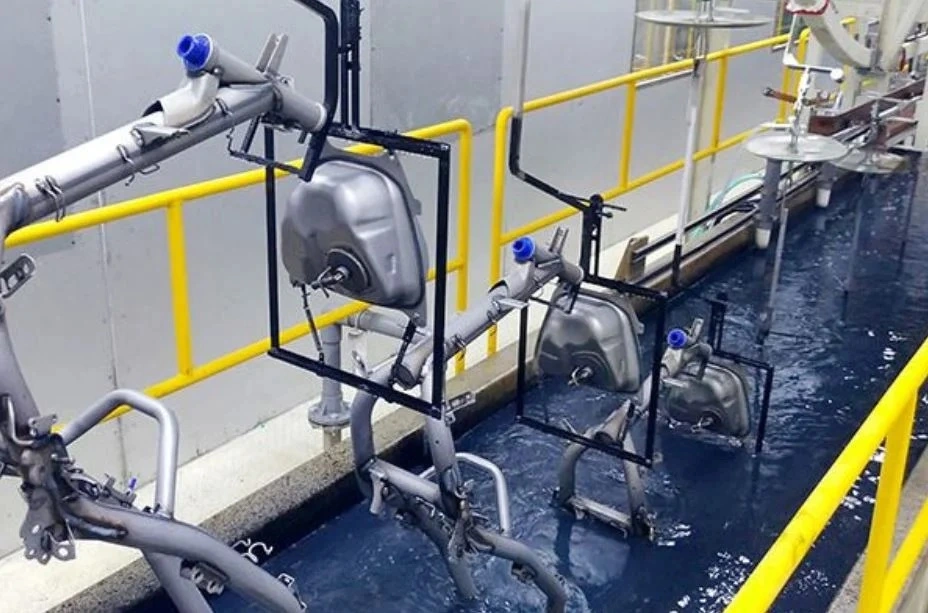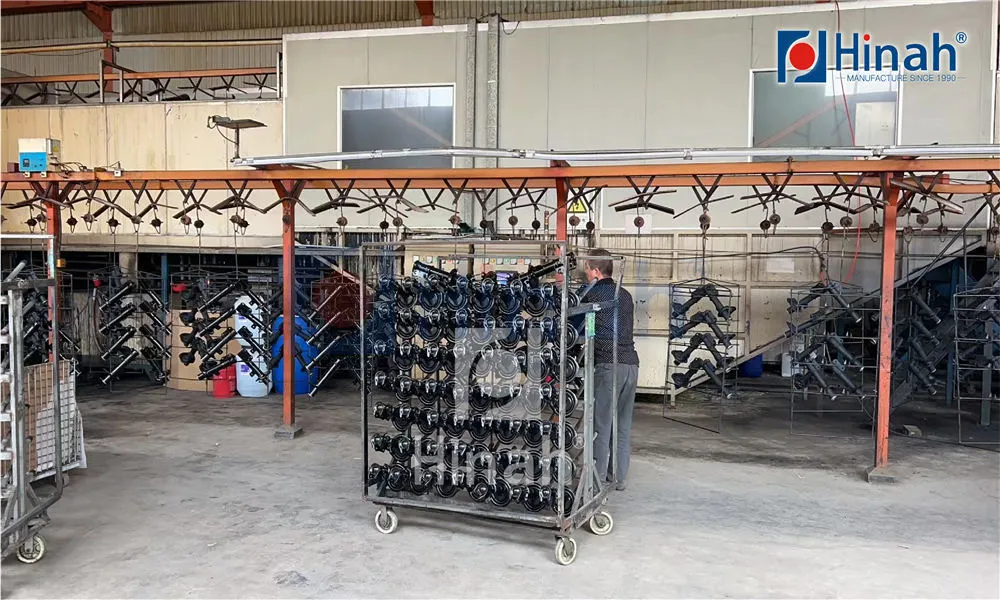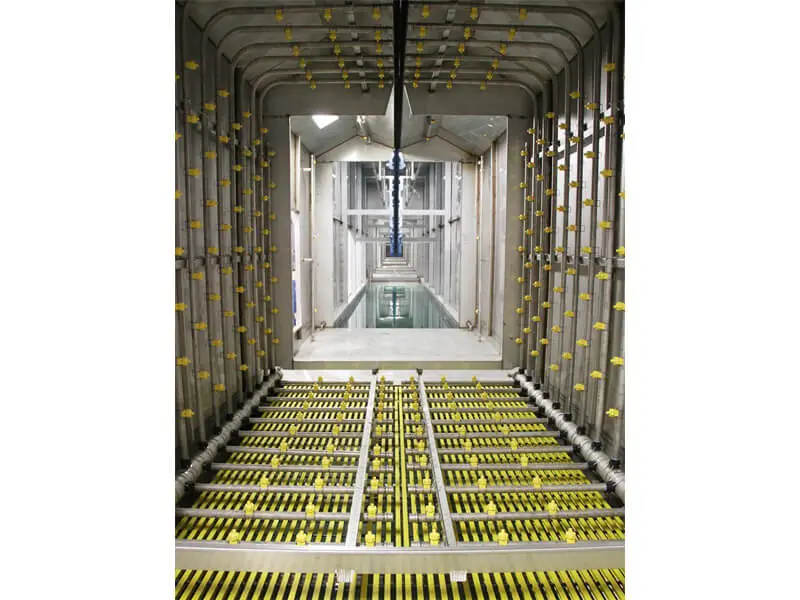The shift towards durable, high-quality, and environmentally friendly finishing solutions has propelled powder coating to the forefront of industrial surface treatment. Establishing a powder coating plant setup represents a significant but rewarding investment for businesses aiming to enhance their finishing capabilities in-house or launch a dedicated coating service. This comprehensive guide delves deep into every critical aspect of setting up your operation, focusing on understanding powder coating plant setup cost, navigating the landscape of powder coating plant manufacturer options, identifying reliable powder coating plant supplier partners, and exploring avenues for finding a suitable powder coating plant for sale. Whether you're a seasoned manufacturer expanding operations or an entrepreneur entering the market, this guide provides the essential roadmap.

Understanding Powder Coating Plant Fundamentals
Before diving into costs and suppliers, it's crucial to grasp the core components of a powder coating line. A complete setup is more than just a spray booth and oven; it's an integrated system designed for efficient workflow and consistent quality. Key elements include:
Pre-treatment System: Essential for cleaning and preparing the substrate (metal parts). Options range from simple manual wash stations to sophisticated multi-stage automated washers (e.g., alkaline cleaning, rinsing, conversion coating like iron phosphate or zirconium, final rinsing, and deionized water rinse). Choice depends on required quality, throughput, and material types.
Drying/Curing Oven (Pre-heat): Necessary after pre-treatment to evaporate all moisture before powder application.
Powder Application Booth: An enclosed, ventilated space where powder is applied electrostatically using spray guns (manual, automatic, or both). Efficient powder recovery systems (cyclonic or cartridge filter) are integral, reclaiming overspray powder for reuse (up to 95-98% efficiency).
Powder Application Equipment: Manual spray guns for flexibility, automatic reciprocators or robots for high volume and consistency, powder pumps, fluidized hoppers, and control units.
Curing Oven: The heart of the process. Parts enter this oven where the powder melts, flows, and chemically cross-links to form the durable finish. Convection ovens (electric or gas-fired) are most common, requiring precise temperature and time control.
Material Handling System: Transports parts efficiently through each stage. Options include overhead conveyors (power & free, monorail), belt conveyors, trolleys, or manual carts. Design significantly impacts throughput and labor costs.
Post-Cure Cooling Area: Allows parts to cool sufficiently before handling or packaging.
Supporting Infrastructure: Compressed air systems (clean, dry air is critical), adequate electrical supply (often high voltage for ovens), efficient exhaust ventilation, and proper facility space.
Breaking Down Powder Coating Plant Setup Cost
Determining the total powder coating plant setup cost is complex and highly variable. Several key factors dictate the investment required:
Scale & Capacity: A small manual line for prototypes will cost vastly less than a fully automated high-volume production line. Throughput (parts/hour or sq ft/hour) is a primary cost driver.
Level of Automation: Manual application and handling reduce initial equipment costs but increase labor and limit throughput. Automated guns, robots, and conveyors boost upfront powder coating plant setup cost but improve efficiency, consistency, and long-term ROI.
Pre-treatment Complexity: A 7-stage zinc phosphating system costs significantly more than a simple 3-stage iron phosphate or nano-ceramic line. Waste treatment systems also add cost.
Oven Size & Type: Larger ovens and those requiring high temperatures (e.g., for certain functional powders) or specialized heating (IR) cost more. Gas vs. electric impacts both installation and operating costs. Insulation quality is crucial for efficiency.
Booth & Recovery System: Size, configuration (downdraft, crossdraft), and the sophistication of the powder recovery unit (basic cyclone vs. advanced cartridge with automatic cleaning) affect price.
Material Handling: A simple trolley system is inexpensive; a fully automated power-and-free conveyor is a major investment.
Building & Infrastructure: Costs for facility modification (floor reinforcement, ventilation ducting, high-power electrical drops, compressed air lines, exhaust stacks) can be substantial and are often underestimated. Environmental permits may add cost and time.
Powder & Ancillary Equipment: Initial inventory of powder colors, spare parts, testing equipment (film thickness gauges, adhesion testers, gloss meters).
Installation & Commissioning: Professional installation by the powder coating plant manufacturer or supplier is recommended but adds cost.
Estimated Cost Ranges:
Small Manual Line: $50,000 - $200,000+
Mid-Sized Semi-Automated Line: $200,000 - $500,000+
Large Automated Production Line: $500,000 - $2,000,000+
Careful planning and detailed quotes from reputable powder coating plant supplier companies are essential for accurate budgeting. Don't forget ongoing operational costs (energy, powder, labor, maintenance).
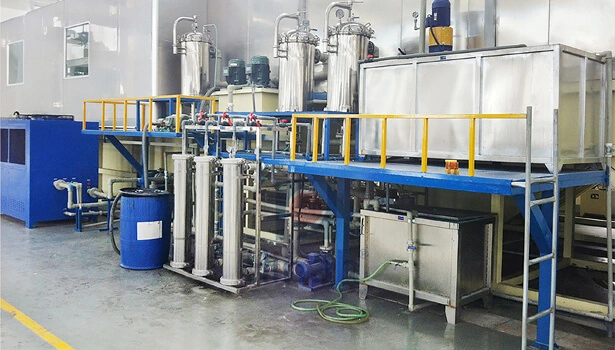
Selecting the Right Powder Coating Plant Manufacturer
Choosing a reliable powder coating plant manufacturer is paramount to the success and longevity of your operation. Consider these factors:
Experience & Reputation: Look for manufacturers with a proven track record in designing and building systems similar to your requirements. Seek references and visit existing installations if possible. Industry longevity is a good sign.
Technical Expertise & Support: Assess their engineering capabilities. Do they offer comprehensive process design? What level of technical support (installation, training, troubleshooting) do they provide? Is support readily available locally?
Product Range & Customization: Can they supply a complete, integrated line? Do they offer the level of automation and specific equipment types (ovens, booths, conveyors) you need? How flexible are they for custom solutions?
Quality & Standards: Inquire about build quality, materials used (e.g., oven construction, booth panels), and adherence to relevant safety and environmental standards (OSHA, NFPA, EPA, CE, etc.).
After-Sales Service & Parts: Availability of spare parts and responsiveness of service technicians are critical for minimizing downtime. Understand their service agreements.
Global vs. Regional: Large international manufacturers offer extensive resources but potentially higher costs and slower local support. Regional specialists might offer more personalized service and faster response times.
Partnering with a Trusted Powder Coating Plant Supplier
While manufacturers often sell directly, many businesses interact with specialized powder coating plant supplier companies. These suppliers play a vital role:
System Integration: Many suppliers act as integrators, sourcing and combining equipment from various manufacturers (ovens from one, conveyors from another, guns from a third) to create a complete, optimized line tailored to your needs.
Local Expertise & Support: Suppliers often have strong regional presence, offering faster on-site service, technical support, and readily available spare parts compared to distant manufacturers.
Used Equipment Market: Many suppliers are key players in the powder coating plant for sale market, offering quality pre-owned or refurbished systems at a lower entry cost.
Ancillary Products & Consumables: They typically supply not just the main line equipment but also powders, spray guns, replacement parts, test equipment, and maintenance chemicals.
Process Knowledge: Experienced suppliers bring valuable application knowledge and can advise on optimizing your process for quality and efficiency.
Evaluate suppliers based on their technical expertise, range of offerings (new, used, integration), service capabilities, and reputation within the industry.
Finding a Powder Coating Plant for Sale
Acquiring a used system can significantly reduce your initial powder coating plant setup cost. Here's where to look for a powder coating plant for sale:
Specialized Industrial Equipment Dealers: Numerous dealers focus specifically on buying and selling used finishing equipment, including complete powder coating lines. They often refurbish equipment.
Online Marketplaces: Platforms like eBay, Facebook Marketplace, and dedicated industrial surplus sites (e.g., SurplusRecord, EquipNet) list used equipment. Exercise caution and thorough due diligence.
Auctions: Industrial auctions (online or physical) can be sources for complete plant liquidations, potentially offering significant deals but requiring careful inspection.
Direct from Companies: Businesses upgrading or closing operations sometimes sell their lines directly. Networking within the industry can uncover these opportunities.
Powder Coating Plant Suppliers: As mentioned, many suppliers maintain an inventory of used or refurbished systems.
Crucial Considerations When Buying Used:
Thorough Inspection: Always inspect the equipment in person or via detailed video. Check for corrosion, wear, oven insulation integrity, conveyor condition, and overall state.
Verify Specifications: Confirm oven dimensions, temperature capabilities, conveyor length/weight capacity, booth size, recovery system type and efficiency.
Check Documentation: Request maintenance records, operating manuals, and electrical/mechanical drawings if available.
Understand Reconditioning Needs: Factor in the cost of necessary repairs, replacement parts (burners, motors, filters), potential rewiring, and reinstallation.
Compatibility & Integration: Ensure all components work together seamlessly or budget for integration costs.
Supplier Reputation: Buy from reputable dealers or suppliers whenever possible.
Key Design Considerations for Your Setup
Beyond choosing equipment, successful powder coating plant setup hinges on meticulous planning:
Workflow Optimization: Design the layout (pre-treatment -> drying -> booth -> cure -> cooling) for a smooth, logical flow of parts, minimizing handling and bottlenecks. Consider future expansion.
Space Planning: Account for the footprint of all equipment, plus ample space for part loading/unloading, staging, maintenance access, powder storage (cool, dry), and operator movement. Include space for future upgrades. Ceiling height is critical for conveyors and oven access.
Ventilation & Airflow: Ensure sufficient make-up air and properly sized exhaust systems for booths and ovens to maintain safe working conditions (prevent powder dust explosion hazards - NFPA 33 compliance is essential) and control humidity/temperature.
Utilities: Confirm adequate electrical capacity (especially for large ovens), clean/dry compressed air supply (CFM at required PSI), gas supply (if applicable), water supply/drainage for pre-treatment, and proper exhaust ducting.
Environmental Compliance: Plan for waste treatment (pre-treatment chemicals, sludge), powder overspray disposal/recycling, and air emissions permitting. Consult local regulations early.
Safety Systems: Integrate fire suppression systems (especially for ovens), proper grounding, emergency stops, and comprehensive safety protocols (PPE, lockout/tagout).
Operational Considerations and Best Practices
Setting up the plant is step one; efficient operation is key to profitability:
Personnel Training: Invest in comprehensive training for operators on safe equipment use, gun technique, troubleshooting, maintenance, and quality control procedures. Training from your powder coating plant supplier or manufacturer is invaluable.
Powder Management: Implement strict procedures for powder handling, storage (avoid moisture, contamination), color changeovers (minimizing downtime is crucial), and reclaim powder usage.
Pre-treatment Control: Regularly monitor and maintain pre-treatment chemical concentrations, temperatures, and spray pressures. Poor prep is the leading cause of coating failure.
Curing Process Control: Precise control of oven temperature and part dwell time is non-negotiable for achieving cure specifications (verified by Differential Scanning Calorimetry - DSC). Use dataloggers.
Preventive Maintenance: Establish a rigorous schedule for cleaning booths/filters, inspecting/replacing oven elements and conveyor components, calibrating instruments, and servicing pumps/guns. Downtime is expensive.
Quality Assurance: Implement robust QC checks: film thickness, adhesion (cross-hatch), gloss, color match, surface defects. Document results.
Calculating ROI on Your Powder Coating Plant Investment
Justifying the powder coating plant setup cost requires a solid ROI analysis:
Initial Investment: Total cost of equipment, installation, facility mods, permits, initial powder inventory.
Operational Costs: Monthly/annual costs for:
Labor (operators, maintenance, supervision)
Utilities (Electricity/Gas for ovens, compressed air)
Powder Consumables
Pre-treatment Chemicals
Maintenance Parts & Service Contracts
Waste Disposal
Facility Overhead
Revenue Generation:
Internal Use: Calculate cost savings vs. outsourcing coating. Factor in improved quality/rework reduction, faster turnaround.
Job Shop: Project revenue based on capacity utilization and market rates per part/sq ft.
Intangible Benefits: Improved product quality/durability, environmental advantages (VOC-free), enhanced manufacturing control, potential for new business/markets.
Payback Period: Divide the initial investment by the annual net savings or profit generated by the line. Typical payback targets are 2-5 years.
Establishing a successful powder coating plant setup is a multifaceted endeavor demanding careful planning, significant investment, and informed decision-making. Thoroughly understanding the powder coating plant setup cost drivers, diligently researching and selecting the right powder coating plant manufacturer and powder coating plant supplier, and carefully evaluating options whether new or a powder coating plant for sale are critical steps. By focusing on optimized design, efficient workflow, stringent quality control, and proactive maintenance, your powder coating operation can become a significant source of competitive advantage, delivering durable, high-quality finishes and a strong return on investment. Start with a clear plan, seek expert advice, and partner with reliable suppliers to navigate your setup journey effectively.
FAQ
➤What is a powder coating plant?
A powder coating plant is an industrial facility specifically designed and equipped to apply powder coating finishes to various objects (substrates). It houses the necessary infrastructure and equipment for the entire powder coating process, including pre-treatment stages (cleaning, rinsing, chemical conversion coating), drying, powder application (typically using electrostatic spray guns in a booth), curing ovens, and post-curing cooling areas. Environmental control systems for air filtration and ventilation are also crucial components.
➤What industry does powder coating belong to?
Powder coating belongs primarily to the Industrial Manufacturing sector, specifically within the Surface Finishing or Industrial Coating industry. It serves as a key process technology across numerous downstream industries including:
Automotive & Transportation (wheels, bumpers, engine parts, bicycles, trailers, agricultural equipment)
Appliances (ovens, refrigerators, washer/dryers, dishwasher racks)
Architecture & Building Products (window frames, door frames, fencing, aluminium extrusions, facades, fixtures)
Furniture (office furniture, garden furniture, shelving)
Consumer Goods (electronics enclosures, lighting fixtures, sporting goods, tools)
General Industrial (machinery, storage racks, pipes, valves, electrical enclosures)
➤What is the purpose of powder coating?
The primary purposes of powder coating are:
Protection: To provide a highly durable, corrosion-resistant, and chip-resistant barrier that protects the underlying metal (or sometimes other materials) from environmental damage, chemicals, moisture, and UV degradation.
Decoration/Aesthetics: To provide an attractive, high-quality finish with a wide range of colors, textures (e.g., smooth, wrinkled, matte, glossy, metallic), and effects.
Durability: To create a finish that is significantly tougher, more flexible, and longer-lasting than many conventional liquid paints.
Environmental & Safety Benefits: To use a coating process that emits negligible VOCs (Volatile Organic Compounds), allows for efficient material usage (overspray can often be recycled), and reduces fire hazard compared to solvent-based paints.
➤Can powder coating be removed?
Yes, powder coating can be removed, but it is generally much more difficult and requires more aggressive methods than removing traditional liquid paint. Common removal techniques include:
Chemical Stripping: Using strong, heated alkaline or acidic stripping solutions to dissolve the coating. Requires careful handling and disposal.
Abrasive Blasting: Using media like sand, plastic beads, soda, or dry ice propelled at high pressure to physically abrade the coating off the surface. Effectiveness depends on the media, pressure, substrate hardness, and coating thickness/type.
Thermal Methods: Burning the coating off in a high-temperature oven (pyrolysis). Primarily used for reclaiming metal parts and requires specialized, high-energy equipment.
Mechanical Methods: Grinding or sanding. Labor-intensive and suitable only for small areas or specific applications.
The choice of removal method depends heavily on the substrate material, the type of powder coating, the desired surface finish after removal, environmental considerations, and cost.


